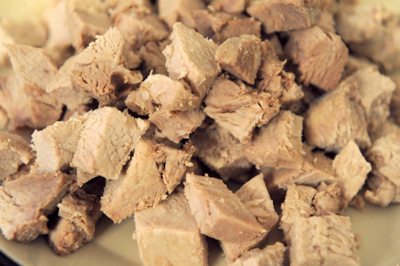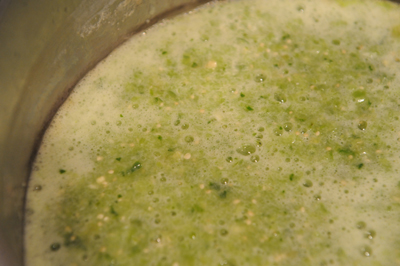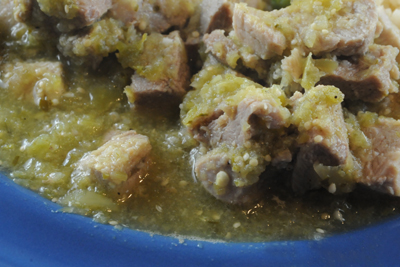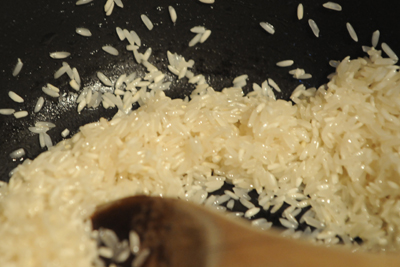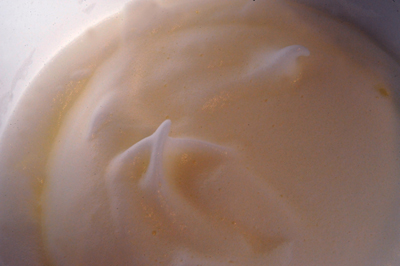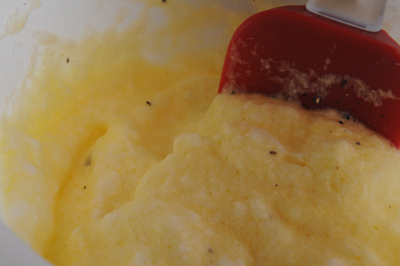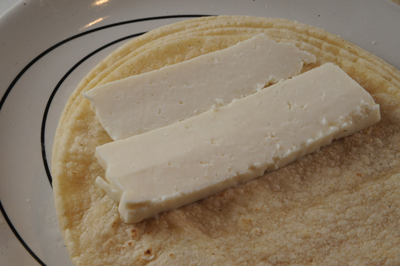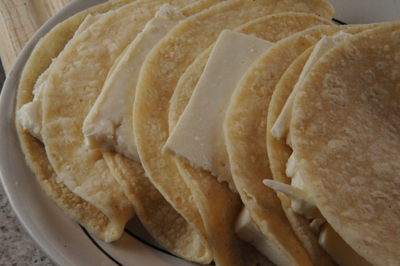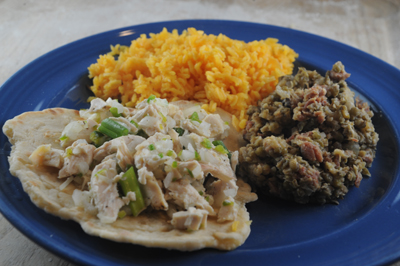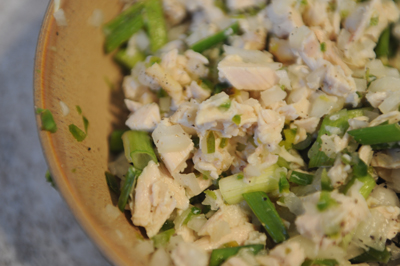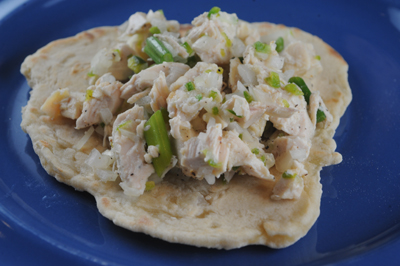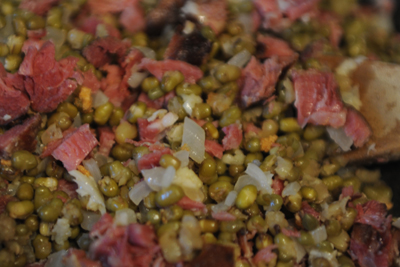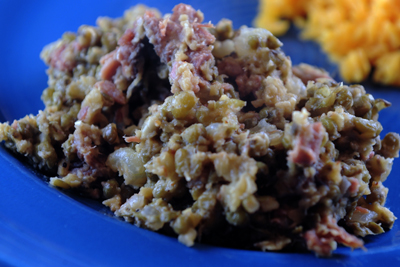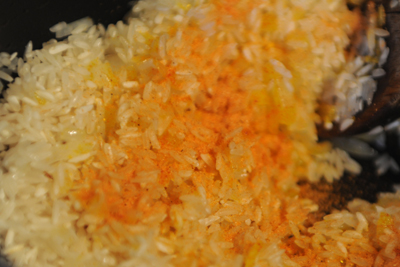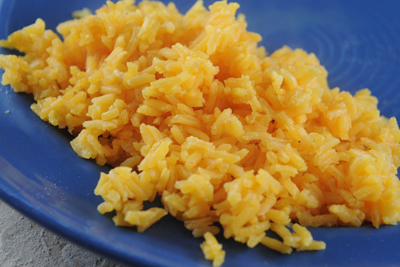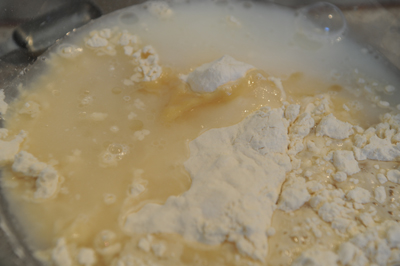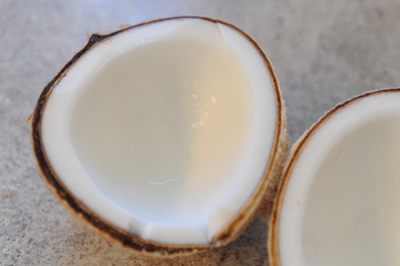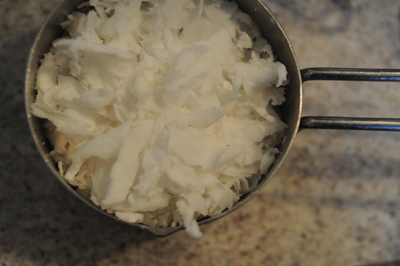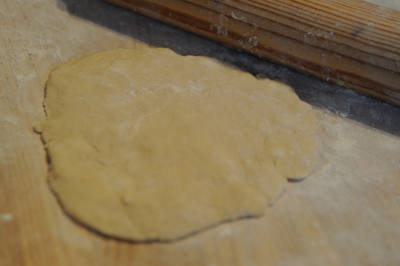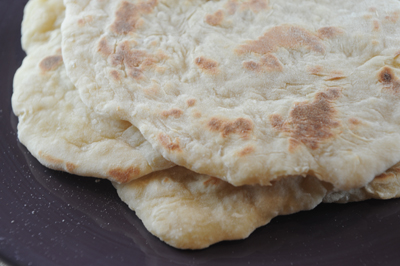Finally! A country that I actually know something about. Here's what I know: when he was in the Navy, my dad was stationed on Guam.
OK so that third sentence is actually the sum total of my knowledge about Guam. Sorry. Because I was maybe one when he was over there and I really know nothing about it, except that he brought home this sort of Japanese-looking doll from there that I still have somewhere.
When Travel by Stove landed on Guam I had to ask my dad if he knew anything about the food there, and he said he did, because one of the guys on his ship was a native of the island, and they were all invited to his wedding. The food served at the event was traditional style, "very spicy, marinated overnight and cooked in a pit." But he's pretty sure it was undercooked because some of the guys were sick the next day, or it might have been the beer.
So that's the sum total of my dad's knowledge about the food in Guam, which is roughly equal to my own plus one actual meal. Now that was many years ago and I won't say how many because then you'll know how old I am. But he couldn't recall the names of the dishes or anything, so besides being an amusing anecdote my dad's lead was kind of a dead end.
Anyway, in case you know about as little about Guam as I do, here's some background:
Guam is an unincorporated territory of the United States. It is one of only five
US territories that have a civilian government (Puerto Rico is another). And it
has, of course, a long history of Europeans trying to settle there and take
control over everything. And also the Japanese. In fact, during World War II
Guam was captured by the Japanese on the same day as the attack on Pearl Harbor.
The Japanese occupied it for two and a half years, during which time the people
were subjected to some brutal treatment which I won't describe here because I
don't really like to use the word "torture" on my blog, unless I'm talking about
shrimp paste or hakarl. Anyway, US troops recaptured Guam in 1944, and today
there's still a strong military presence on the island. The military, in fact,
is Guam's second largest source of income, just behind tourism.
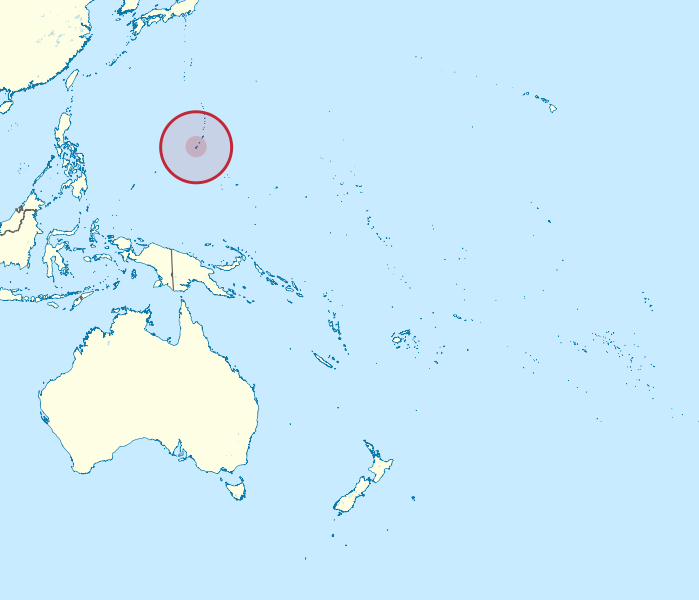 |
|
Most of Guam's traditional cuisine comes from its indigenous population, the Chamorros. The food is flavorful, relies on tropical ingredients such as coconut and is, as my dad described, often grilled, barbecued or cooked in a pit. It was actually surprisingly easy to find Chamorro recipes since Guam's indigenous people have a long tradition of preparing delicious food, and probably also because the tourism industry helps keep those old recipes alive. Here are the ones that I chose for this week's meal (all recipes come from
671 Guam Recipes):
Chicken Kelaguen
- 2 grilled chicken breasts
- 1/2 onion
- 3 green onions, sliced on the diagonal
- 1 jalapeño
- Salt and pepper to taste
- Juice of 2 lemons
- Flour tortillas
Red Rice
- 4 cups uncooked rice
- 2 packs Sazon Goya
- 1 onion, chopped
- 1 tsp vegetable oil
- 1 or 2 tsp salt
Mung Beans and Ham Hocks
- 2 to 3 smoked ham hocks
- 1 1/2 cup dried mung beans
- 5 or 6 garlic cloves
- 1 whole onion, quartered
- Salt to taste
- Black pepper to taste
- Garlic powder to taste
- 1 whole onion, diced
- 3 cloves garlic, minced
- 1 tbsp olive oil
- 1 tsp salt
- 1 tsp achiote powder mixed with 1/4 cup water
- 1/2 cup coconut milk
Manha Titiyas
- 3 1/2 to 4 cups of flour
- 1 cup sugar
- 2 tbsp canola oil
- 1/4 cup milk
- 1 1/2 cups coconut water
- 1 to 2 cups coconut meat, sliced thinly into 1-inch pieces
You can make the chicken ahead of time since it's served chilled, so let's start there.
I'm pretty sure you can cook the chicken any way you like, as long as you don't season it. The chicken should take most of its flavor from the lemon juice and the rest of the ingredients in the kelaguen itself. This particular recipe calls for a basic grilled chicken, but the author also says he often just steams his chicken breasts in foil like you would a piece of fish. I just used a rotisserie chicken from Safeway.
So, break the chicken up into bite-sized pieces and then mix in the onions, green onions, jalapeno, salt and pepper and lemon juice. Transfer to the fridge and chill.
Serve on flour tortillas (I served mine on the Manha Titiyas, more about that later).
Meanwhile, make the mung beans:
Boil the ham hocks with the garlic, onion, black pepper and garlic powder for about three hours. Drain and set aside, reserving the stock. Let cool, then cut the meat up into small pieces.
Meanwhile, boil the mung beans until soft (mung beans cook pretty quickly, in about 45 minutes to an hour).
Now saute the rest of the garlic and onions in olive oil until the onions are translucent. Add the mung beans and salt.
Now add the chopped ham and a little more pepper and garlic powder to taste, then two or three cups of the ham broth and the achiote water.
Simmer for 10 to 15 minutes. In the last couple of minutes, add the coconut milk. Serve at once.
Now for the rice:
Saute the onion in the vegetable oil until translucent. Add the rice, Sazon Goya and water, then bring to a boil.
Reduce heat, cover and cook for 20 minutes or until all the water is absorbed.
Now I get the feeling that this is kind of a dumbed-down version of Guam's red rice, which is generally made with a blend of seasonings and achiote paste (the achiote is what gives it its red color). Since Sazon Goya is also made with achiote paste and since this shortcut comes from a source in Guam, I felt justified in making things easy for myself. This time.
Now for the titiyas (which means "tortillas").
I originally made these as a dessert, because I looked at the amount of sugar in the recipe and thought, "dessert." Then as I was making them I decided to do some extra Googling just to be sure, and found several references to them being used with savory dishes. So at the last minute I served them with the kelaguen instead of using the plain flour tortillas I bought for the occasion. Anyway first here's how to make them:
Mix together all of the ingredients except for the coconut meat.
Now, I used a fresh coconut which was a first for me, because I didn't think that canned coconut water would be an acceptable substitute (maybe it is, who knows) and all you can really buy in the store is sweetened, shredded coconut. So I had Martin open up the coconut for me using what I'm pretty sure was an incredibly dangerous technique, and I poured out the water into a measuring cup.
Then I spent about an hour scraping the damned coconut. It's hard to get enough meat out of one of those things, or at least out of that particular one of those things.
So once you've done all that and you've mixed together the ingredients you can add the coconut meat. The dough should be pliable, so feel free to add extra flour until it is the correct consistency. If it's too dry you can add a bit more of the coconut water.
Now break the dough apart into six pieces and roll into balls. On a floured surface, roll each ball out until it is about as thick as a tortilla (mine were thicker than they were supposed to be).
Heat the oil in a large skillet and turn the heat down to medium. Put the tortilla in the skillet and cook until it's starting to turn golden on one side, then flip and cook the other side. Keep warm until ready to serve.
I was very pleasantly surprised by this meal. It's exactly what you want from a meal—simple
and delicious. It seems like you hardly ever get those two things to happen together, at least not on blog night.
Martin loved the kelaguen. In fact he told me I should make it again and we should invite some friends over. I was almost afraid to tell him it was just a rotisserie chicken with some onions and lemon juice.
Actually I think one of the things he liked the best was the manha titiyas, which were sweet but strangely delicious with the kelaguen. Now, someone is bound to post a note on this entry letting me know that eating manha titiyas with kelaguen is wrong, wrong, wrong, but hey, it worked for us and even if it was wrong I would probably do it again. There, I said it.
The beans and ham were nice and different, but a bit stodgy. I'm not sure they were exactly right with the kelaguen, but I did like them.
Oh, and the rice: loved it. I am a huge fan of fluffy rice with a simple flavor, like the sort of thing you get as a side in a Mexican restaurant. This was exactly like that, only with a twist. Nice light flavor and light texture that went perfectly with the other two dishes.
So there you go, not exactly the same experience that Dad had with food in Guam, but very surprisingly delicious and simple. A keeper, for sure.
Next week: Guatemala
For printable versions of this week's recipes:
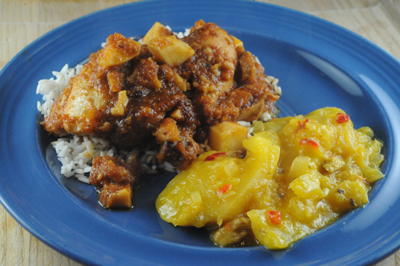


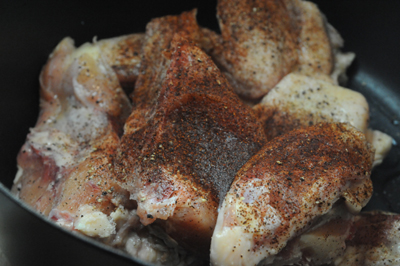
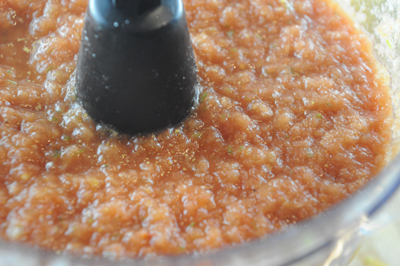
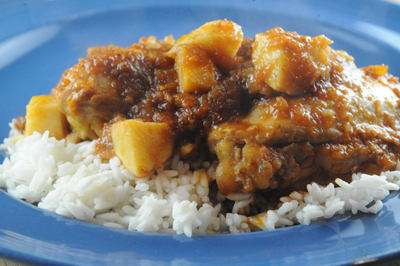
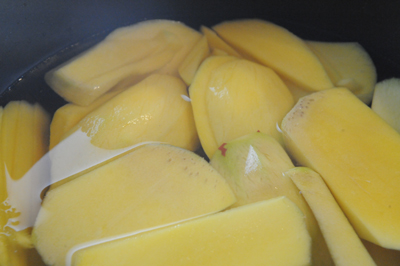
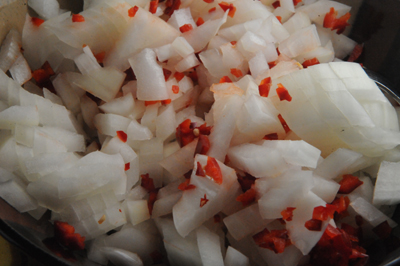
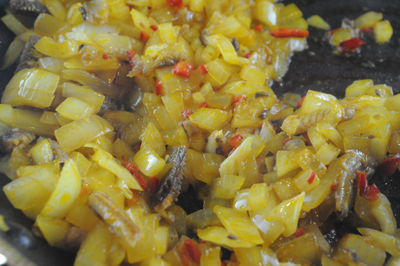
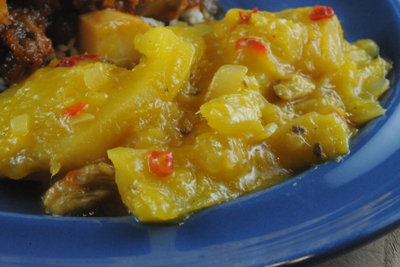












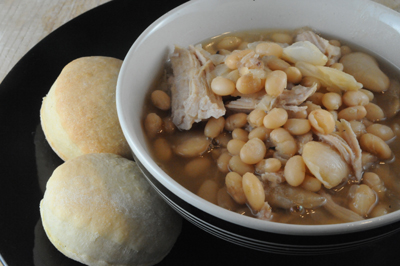

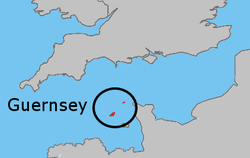
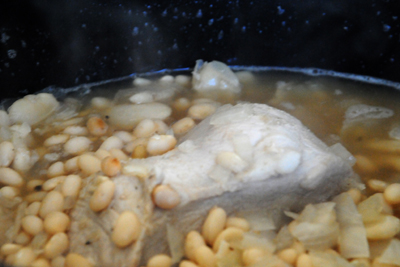
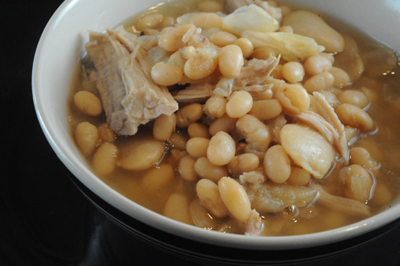
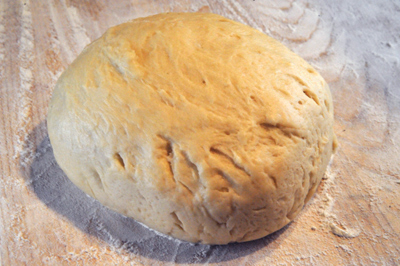

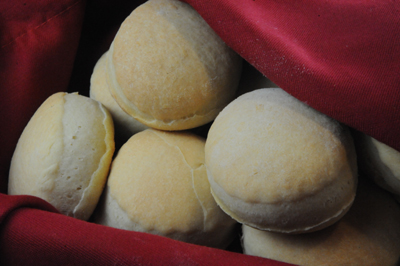
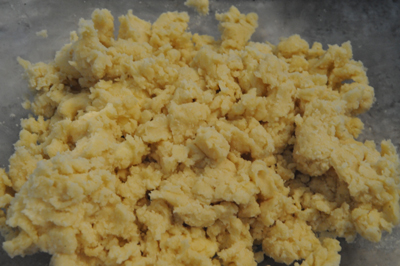
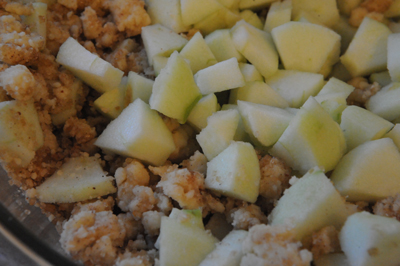
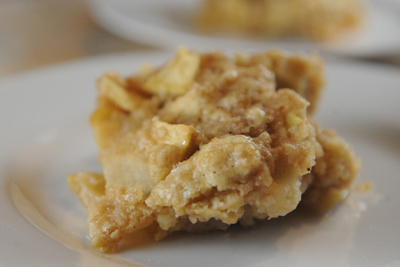

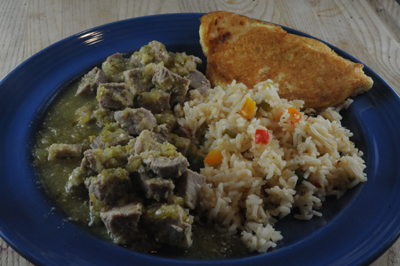
.svg/550px-Guatemala_(orthographic_projection).svg.png)

